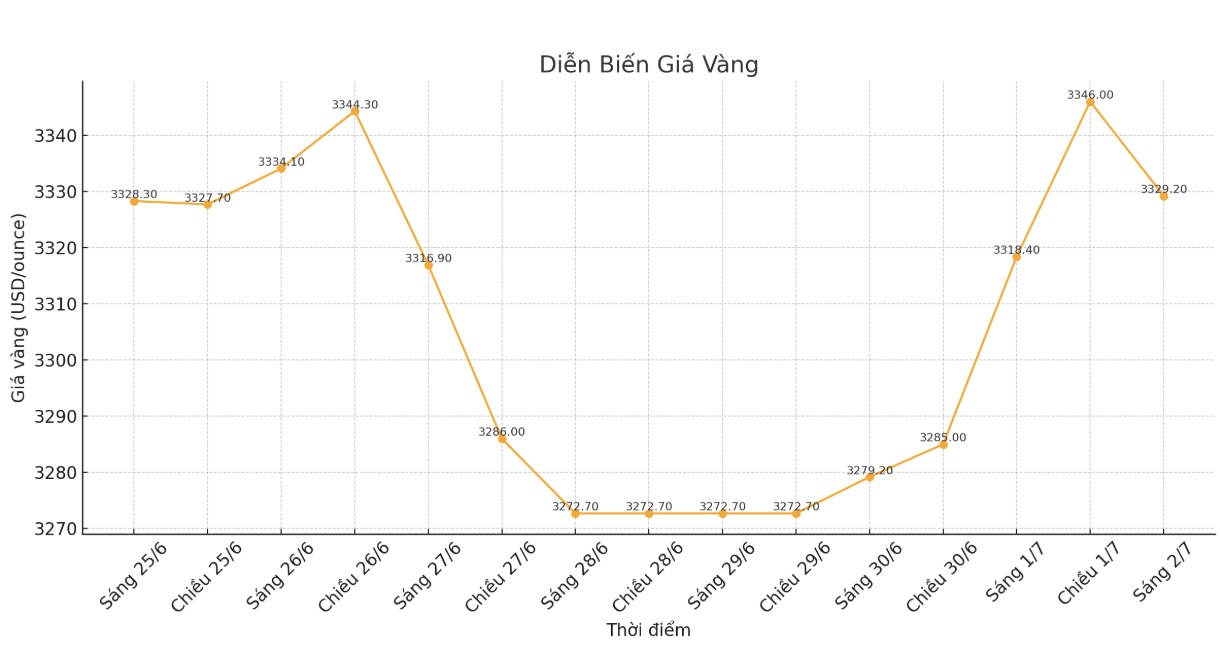The precious metals market has changed significantly in recent years, as supply and demand factors for gold, silver and platinum have shifted according to geopolitical tensions and industrial trends. However, according to analysts at Saxo Bank, all three metals still play an important role in the investment portfolio.
For decades, these assets have played the role of inflationary barrier, buffer zone during geopolitical tensions, and a pillar of diversified portfolio. However, that role is continuing to change.
Central banks are still hoarding gold, strengthening its position as a reserve asset. Meanwhile, inflationary pressures remain uncertain, and demand for silver and platinum is gradually shifting to industrial use, especially in solar energy and clean technology, they noted.

In this context, calling precious metals "safe haven" is not enough. The more correct question is: what is safe for, and how long?".
Saxo Bank considers gold a standard measure to compare all other safe-haven channels.
Over the centuries, gold has preserved its asset value in a way that few assets can compare to, especially in the period of systemic risk. Unlike most commodities, gold is not consumed or depreciated - it is kept. That makes gold different. The main function of gold is not industry but currency, experts said.
Currently, central banks around the world hold more than 36,700 tonnes of gold, with the largest reserves in the US, Germany and China. This amount of gold accounts for about 17% of the total gold ever mined. For many countries, gold reserves are a way to diversify, both strengthening financial prestige and protecting against currency fluctuations or geopolitical shocks. This is also the reason why central bank demand for gold remains stable and often increases sharply when global instability escalates.
For individual investors, gold often has the best performance when real interest rates are low or negative, when the Prediction is under pressure to depreciate, or when the market drops sharply. its role as a short-term anti-inflation barrier is still controversial, but in the long term, gold always retains purchasing power through inflationary cycles - experts wrote
Meanwhile, Saxo experts say that silver is a harmonious mixture between shelter role and specific industrial applications.
"Siliver combines two investment stories: a place to preserve value and industrial goods. This dual role brings flexibility - both a defensive tool when the market fluctuates and has the potential to increase prices in the period of economic expansion. It is this versatility that makes it more complex and volatile than gold.

They said more than 50% of global silver demand comes from the industrial sector. This characteristic makes silver less consistent than gold as a safe haven, but more sensitive to periods of re-inflation or growth inflation. Silver can outperform when risks are reduced, but it also often falls behind if industrial demand weakens.
Lower prices per silver ounce also make it easier for individual investors to access, while silver ETFs and futures maintain high liquidity for large or short-term allocations.
For its part, platinum is closely associated with high-tech applications.
Platinum stands out for its rarity and industrial importance. It is much rarer than gold or silver, and is mostly mined in South Africa and Russia. This geographical concentration makes supply vulnerable to disruption, although currently, sanctions on Russian basic metals are not expected to have a major impact on the platinum market in the short term, said Saxo Bank.
Unlike gold, platinum prices are mainly affected by industrial demand. About 40% of global platinum demand comes from the auto industry, which is essential for producing exhaust filters for internal combustion engine vehicles. In addition, platinum is used in oil refining, medical equipment, and has the potential to be applied in hydrogen fuel cell technology, although the impact is still modest due to the slower implementation speed than expected, they emphasized.
Regarding the allocation of investment capital, Saxo Bank recommends that investors should reserve about 2-5% of total assets for a cautious investment portfolio, most of which is gold. For more balanced or inflation- sensitive portfolios, the proportion could increase to around 10%, especially during times of currency uncertainty or when the value of the currency is in decline.











